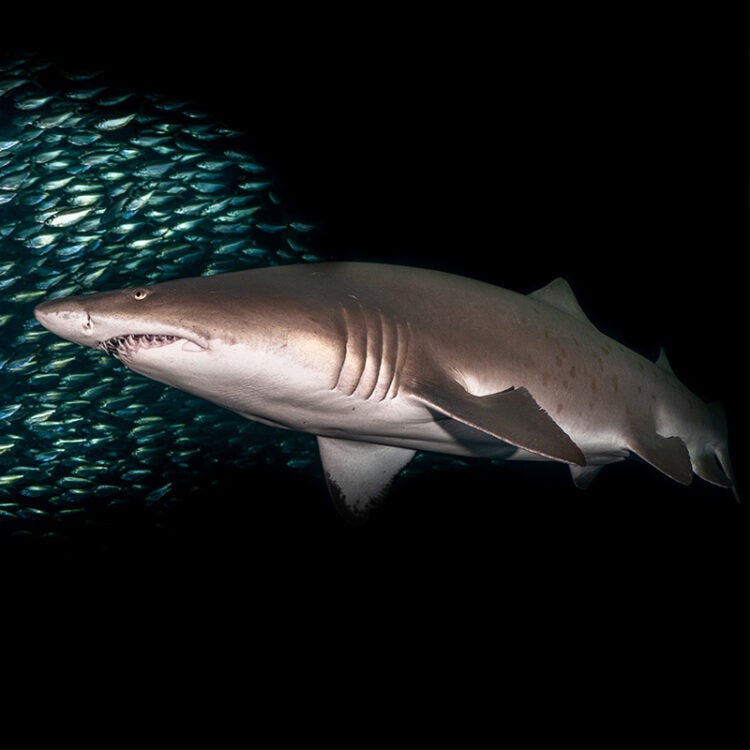-
Size
6.5 to 10.5 feet (2-3.2 m) -
Diet
Bony fishes, smaller sharks, rays, squid, crabs and lobsters -
Range
Tropical ocean environments worldwide -
Habitat
Shoreline habitats to depths of about 625 feet (191 m)
Physical Characteristics
- Brownish-gray with rust-colored spots on the back and white underneath. Spots fade as the animal matures.
- Displays a mouthful of sharp teeth that protrudes in all directions, even when the mouth is closed. Despite its menacing appearance, it is a docile and non-aggressive species.
- Narrow, flattened, cone-shaped snout and very small eyes.
- Ranges in length from 6.5 to 10.5 feet (2-3.2 m) and may weigh 200 to 350 lbs. (91-159 kg).
Animal Fact
A sand tiger shark's spots fade as the animal matures.
Diet / Feeding
- Diet consists of bony fishes, smaller sharks, rays, squid, crabs and lobsters.
Range / Habitat
- Tropical ocean environments worldwide except the Eastern Pacific.
- Found in shoreline habitats to depths of about 625 feet (191 m).
Reproduction & Growth
- The lowest reproductive rate among sharks, giving birth every two years to one or two pups after a gestation period of 9-12 months.
- Ovoviviparous. The embryos are initially nourished by the egg yolk and later consume slower-developing embryos while still in their mother’s uterus.
- Sand tiger shark pups are 3 feet (1 m) long at birth.
Conservation Status
- Listed as “Critically Endangered” on the IUCN Redlist.
Additional Information
- Only shark species that swims to the surface and swallows air in order to regulate its buoyancy. This enables it to remain motionless at any depth while seeking prey.





